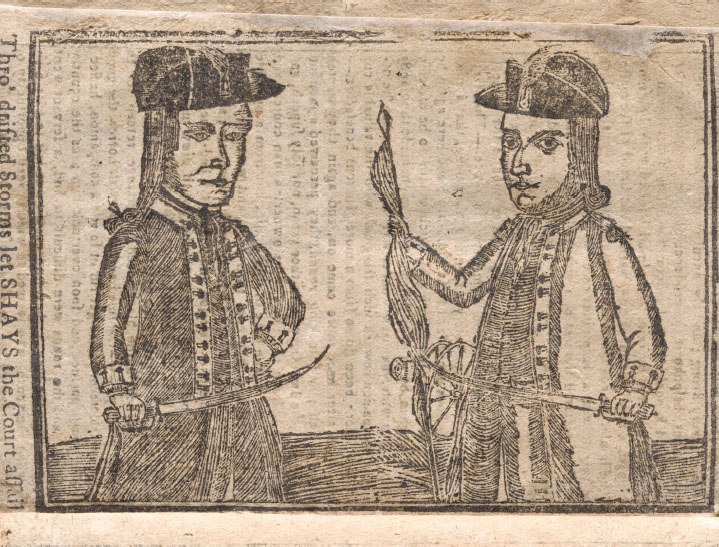Indebted Farmers Fuel Political Crises

Although many Americans struggled economically in the 1780s, ordinary men did gain a greater voice in politics. Under constitutions written during the Revolution, most state governments broadened the electorate, allowing men with less property (or in some cases no property) to vote and hold office. They also increased representation from western areas. Although most elected officials still came from the wealthier classes, many felt some responsibility to address the claims of the less fortunate.
Still, the economic interests of poor farmers and of wealthy merchants and landowners diverged sharply. As conflicts between rich and poor, debtors and creditors, escalated between 1783 and 1787, state governments came down firmly on the side of those with money. When petitions and elections failed, impoverished workers and farmers mounted protests. In New Hampshire, debt-ridden farmers marched on the original state capital at Exeter to demand reform. They were confronted by cavalry units, who quickly seized and imprisoned their leaders.
In addition to rebellions by farmers and debtors, many political and economic leaders were worried about the continued efforts of Great Britain and Spain to undercut U.S. sovereignty, ongoing struggles with Indian nations, and attacks on private property by squatters. When James Madison and Alexander Hamilton attended the 1785 convention in Annapolis to address problems related to interstate commerce, they discovered that their concerns about the weakness of the confederation were shared by many large landowners, planters, and merchants. Despite these concerns, state legislatures were reluctant to give up the powers conferred on them under the Articles.
Shays’s Rebellion, the 1786 armed uprising by disgruntled, indebted farmers in western Massachusetts, turned the tide by crystallizing fears among prominent patriots about the limits of the confederation model. On December 26, 1786, Washington wrote Henry Knox to express his concerns about the rebellion and other upheavals along the frontier: “If the powers [of the central government] are inadequate, amend or alter them; but do not let us sink into the lowest states of humiliation and contempt.” Hamilton, too, believed that Shays’s Rebellion marked “almost the last stage of national humiliation.” Speaking of the confederation government, he claimed that this “frail and toddering edifice seems ready to fall upon our heads and crush us beneath its ruins.”
Review & Relate
|
How did America’s experience of the Revolutionary War change the lives of African Americans and women? |
What do uprisings by farmers and debtors tell us about social and economic divisions in the early Republic? |